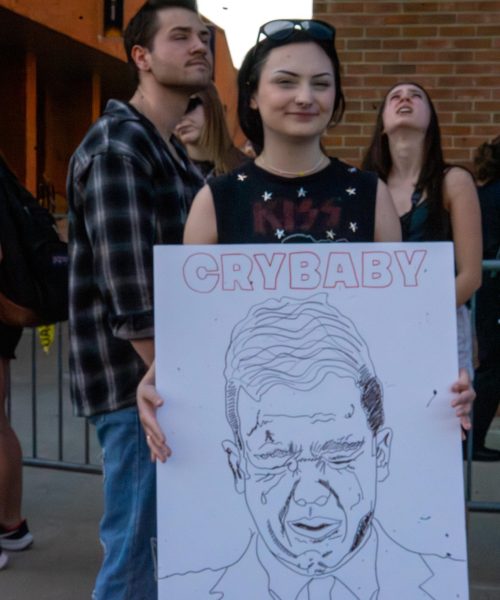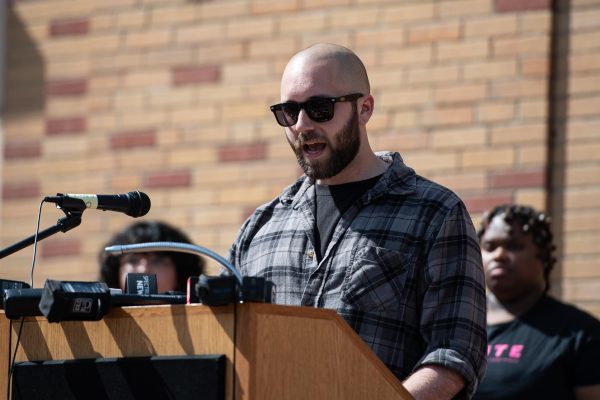Lefton and the state still meeting regularly on possible bonds
September 16, 2011
Major improvements include:
- Williams Hall
- Smith Hall
- Cunningham Hall
- Bowman Hall
- Satterfield Hall
- Art Building
- Van Deusen Hall
- Art Annex
- Harbourt Hall (nearly complete)
- Heer Hall (in design)
- Stewart Hall (complete)
- Taylor Hall
The university’s final step of requesting bonds from the state to renovate 30 buildings across campus has proven to be the toughest one.
University officials have been engaged in a process of talking, learning and asking the advice of legislators with the Ohio Controlling Board, President Lester Lefton said last week.
“The need is clear,” Lefton said. “Everyone agrees upon the need. What everyone can’t agree on is the best way to fund the renovations.”
Lefton first submitted the $210 million bond proposal to former Chancellor Eric Fingerhut in Fall 2010, who allowed it to expire without approval. He then sent it again to new Chancellor Jim Petro in April.
Both proposals include student fees to help pay for the $250 million renovations — $7 per credit hour starting in 2013, increasing to $24 per credit hour by 2016.
There is currently no proposal in front of the Controlling Board, and the university has not written another one.
“We have not abandoned that commitment to renovating the campus,” Lefton said. “The board’s feeling and my feeling is that (students) deserve to have first-tier facilities. It’s by no means over.”
The Controlling Board consists of six state legislators and an administrative president. It handles limited, day-to-day adjustments in the state budget.
State Sen. Tom Sawyer, a member of the board, also represents Kent State and Portage County.
Sawyer said he doesn’t believe it’s the purpose of the board to grant large, capital requests for long-term projects.
“These are the kinds of proposals that have historically been made in the capital budget,” Sawyer said. “I think that’s the appropriate place to be making these.”
Buildings with partial improvements (less than 50% of the building impacted) include:
- Terrace Hall
- Schwartz Building
- Lake/Olson Hall
- University Library (some components already complete)
- Lowry Hall (currently underway for the College of Public Health)
- Moulton Hall
- White Hall
- MACC Annex
The university’s capital budget differs from the operational budget in that long-term investments are typically made in the former.
Instead, the operational budget focuses on more interim, emergency funding universities need, he said. If the board would make an exception and approve a proposal, he said, it could set a new precedent and lead other state universities to expect the same treatment.
“It would represent a substantial change in policy,” Sawyer said. “It’s a policy matter that probably should not be decided by six members of the General Assembly. If we begin to do this, every university in the state of Ohio will be rushing to the Controlling Board.”
State Rep. Clayton Luckie, a Democrat from Dayton, said he would support any proposal from Kent State, regardless of student fees. This generation has to step it up to support the next one, he said, and that’s the way it has always been.
“If we kept saying ‘no,’ nothing would be built,” Luckie said. “I support the (Kent State) administration completely. Kent State deserves to have this bond issue. You guys need it up there.”
Calls to three other legislators’ offices were not returned, while Rep. John Carey issued a statement declining to comment until there was an official proposal.
Yank Heisler, dean of the College of Business, said student fees are the most reliable way to help pay for the renovations over time.
“The investor looks at the repayment source,” Heisler said. “Changing tuition suggests that you could have a broader base of repayment funding. So that is why Lester and Gregg (Floyd) and our Board of Trustees feel that it is a reasonable approach.”
He said Kent State has no other sources of repayment that are as broad-base and consistent as student fees, and there are few plausible alternatives. Some other forms of repayment, such as appealing to donors, could lighten the load, he said.
“This wouldn’t be a good thing to do for ($250 million), but you could go out to donors and have donors contribute,” he said. “But that’s an uncertain source and a highly risky source of repayment.”
Other building impacted by energy improvements and ADA improvements include:
- Liquid Crystal and Material Science Building
- Henderson Hall
- Math and Computer Science Building
- Laboratory Research Building
- McGilvrey Hall
- Music and Speech Center
- Nixson Hall
- Kent Hall
- Rockwell Hall
- Cartwright Hall
- Business Administration Building
- Residence Hall (underway)
- Auxiliary Buildings
Controlling Board President Randy Cole said he doesn’t see too much disagreement — just talking.
“I don’t know that there are two sides,” Cole said. “Some people have said, ‘Oh, we’re waiting for the Controlling Board to take action.’ But we’re not at that point in the process where we’re holding anything up.”
Cole said holding extensive talks before submitting another proposal allows the university to gain the best idea about whether there is enough support for it to pass. Kent State does not want to have it rejected or even amended by the board, he said.
However, Rep. Sawyer said no in-depth talks about compromise, alternatives or possible rejection have happened yet.
“It’s going to take a good deal more discussion,” Sawyer said.
Sawyer said he had a scheduled meeting Sept. 7 with university officials, but Lefton canceled to spend time with his new grandchild.
Lefton said the renovations will eventually get done because “they have to be.”
“No one expects to build a house and never put a new roof on it,” Lefton said. “We are looking to find a way to make this palatable to everyone involved. That process is continuing.”
Contact Daniel Moore at [email protected].























